
The recent sighting of numerous blue whales around the Seychelles archipelago has sparked excitement and awe among marine biologists and enthusiasts alike. Considered a “phenomenal finding,” this discovery marks the first time these majestic creatures have been observed in these warm waters since 1966. The significance of this event extends beyond mere fascination, representing a remarkable milestone in the ongoing recovery efforts for the world’s largest animal. Situated in the Indian Ocean off the coast of Africa, the Seychelles hold a historical narrative intertwined with the plight of whales, once serving as a stopover for Soviet whalers en route to Antarctica. The years of 1963 to 1966 were particularly grim, witnessing a significant decline in whale populations due to intense hunting, only halted by international whaling regulations in 1973.
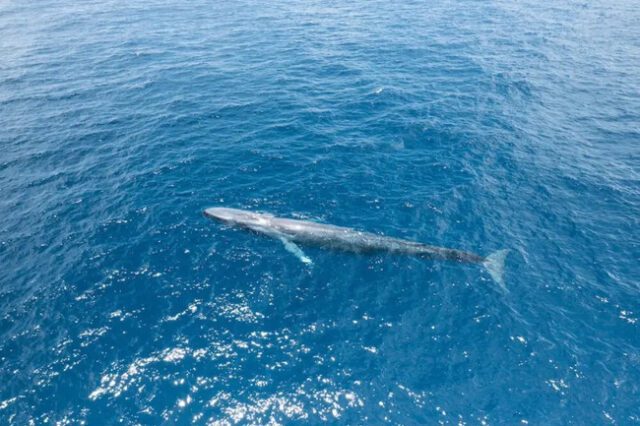
The resurgence of blue whales in the Seychelles underscores the importance of sustained conservation efforts and scientific research in safeguarding marine biodiversity. A collaborative effort involving four universities conducted a comprehensive acoustic survey spanning two years, revealing not only the presence of blue whales but also a diverse array of 23 whale species. The data collected suggests that the waters surrounding the Seychelles offer a conducive habitat for these magnificent creatures, with peak whale activity occurring between December and April. Despite their immense size and global distribution, the elusive nature of blue whales, coupled with their extensive migrations and deep-sea dives, presents challenges in monitoring and understanding their behavior. However, this groundbreaking discovery serves as a beacon of hope, inspiring further exploration and conservation initiatives to ensure the continued thriving of these iconic marine giants.

In a tale that could be straight out of a feline-centric sitcom, a mischievous calico named Galena inadvertently embarked on a cross-country journey inside an Amazon return package. What began as a routine nap in her beloved cardboard sanctuary turned into a harrowing six-day adventure when she found herself whisked away to a fulfillment center in Jurupa Valley, California. Unbeknownst to her humans, Carrier and Matt Clark, Galena had nestled herself snugly among a pair of shoes destined for return, embodying the quintessential cat mantra of “if it fits, I sit.” As the Clarks grappled with the inexplicable disappearance of their cherished pet, Galena’s odyssey unfolded unbeknownst to them. Miraculously, Galena’s survival within the confines of the box hinged on a series of fortuitous events. Imperfectly sealed by Matt, the box allowed for a vital supply of air, while moderate weather conditions prevented her from succumbing to heat or cold. Galena’s fate took a turn for the miraculous when she caught the attention of an empathetic Amazon employee, Hunter Brandy, whose passion for feline welfare extended beyond the confines of her workplace.

Through Hunter’s intervention, Galena was not only rescued but also reunited with her relieved and overjoyed family, culminating in a heartwarming saga of perseverance, compassion, and the enduring bond between humans and their furry companions. The saga of Galena and the Amazon box serves as a whimsical yet poignant reminder of the inexplicable allure that cardboard holds for our feline friends. Beyond its comedic overtones, the narrative underscores the importance of pet microchipping in facilitating timely reunions and averting potential tragedies. Hunter’s unwavering dedication to Galena’s well-being exemplifies the profound impact that acts of kindness and empathy can have, transcending boundaries and reaffirming the intrinsic value of every life, furry or otherwise. In a world often fraught with uncertainties, Galena’s improbable journey stands as a testament to the resilience of the human-animal bond and the boundless capacity for hope and redemption that resides within us all.

In the tranquil expanse of Pembrokeshire’s coastline, Jon Foreman’s land art beckons the viewer to immerse themselves in the raw beauty of nature. With each meticulously placed stone in installations like Manifold Spiral, Foreman crafts a dialogue between the Earth’s materials and the human spirit. As sunlight bathes the circular arrangement of rocks, casting gentle shadows on the sandy beach, one can’t help but feel a sense of awe at the harmony between art and environment. Foreman’s choice to work with on-site materials not only underscores his reverence for the natural world but also invites contemplation on the transient nature of existence. His sculptures, vulnerable to the whims of tides and weather, serve as ephemeral monuments to the ever-shifting landscape.

Through the lens of his camera or the frame of his short films, Foreman invites viewers to witness the convergence of artistry and environment. Each composition, whether a meticulously arranged spiral or an organic cluster of stones, speaks to the interconnectedness of all things. As waves lap at the edges of his creations and clouds drift lazily overhead, Foreman’s art serves as a reminder of the profound serenity found in simply being present in nature. With every new installation, Foreman continues to captivate audiences, offering glimpses into the profound beauty that surrounds us and encouraging a deeper appreciation for the world we inhabit.
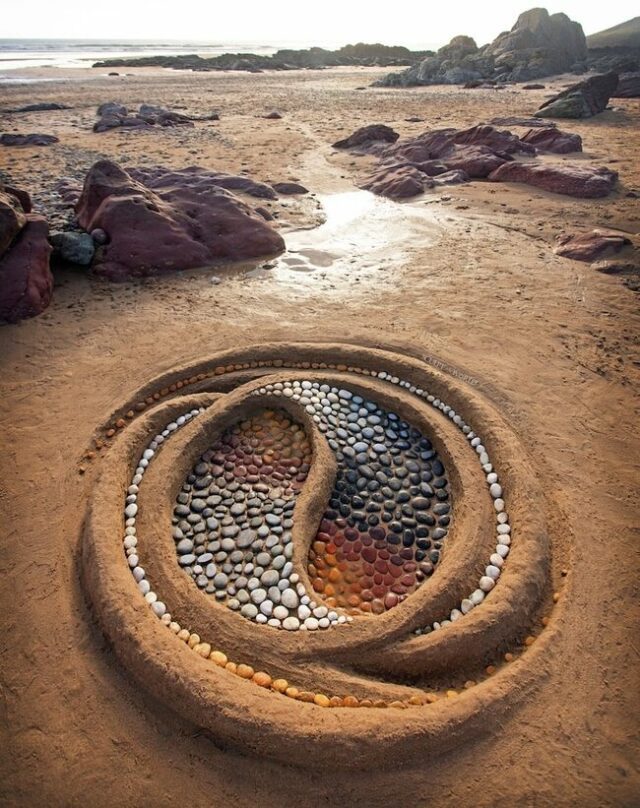
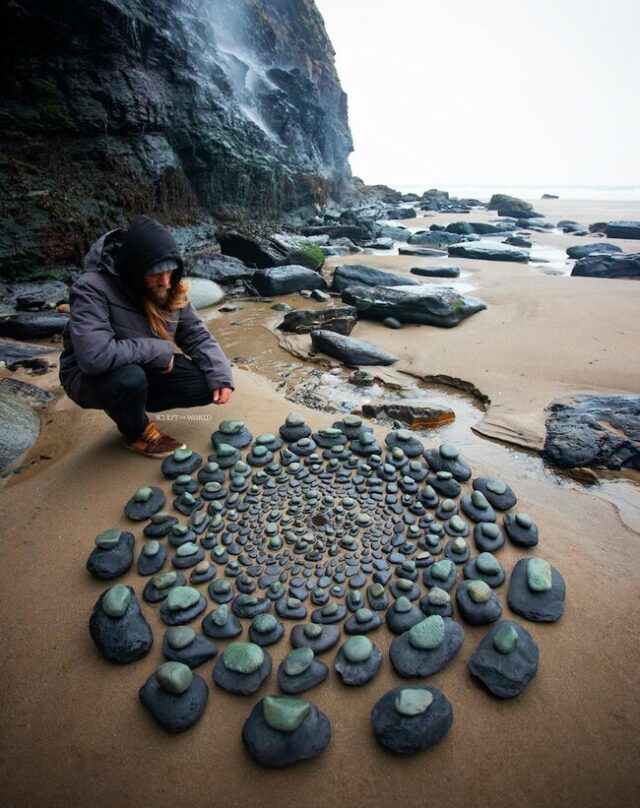
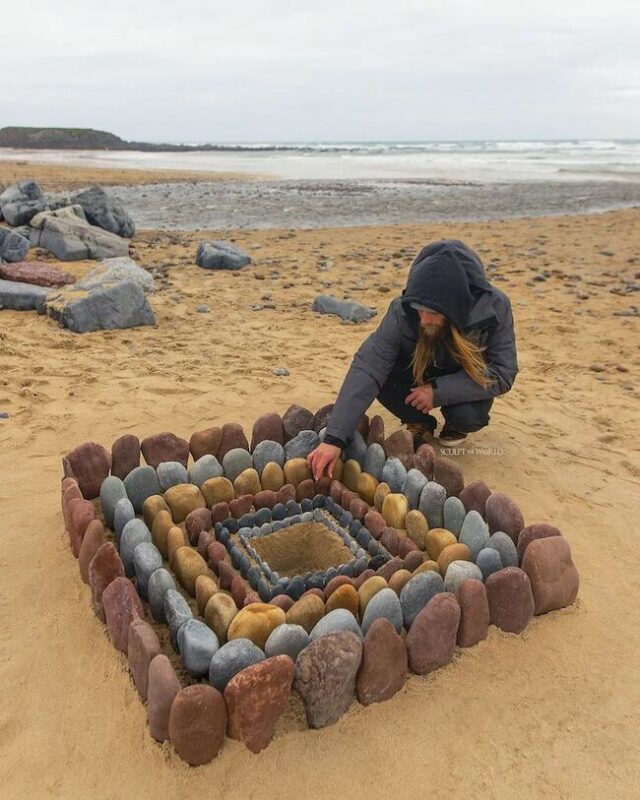

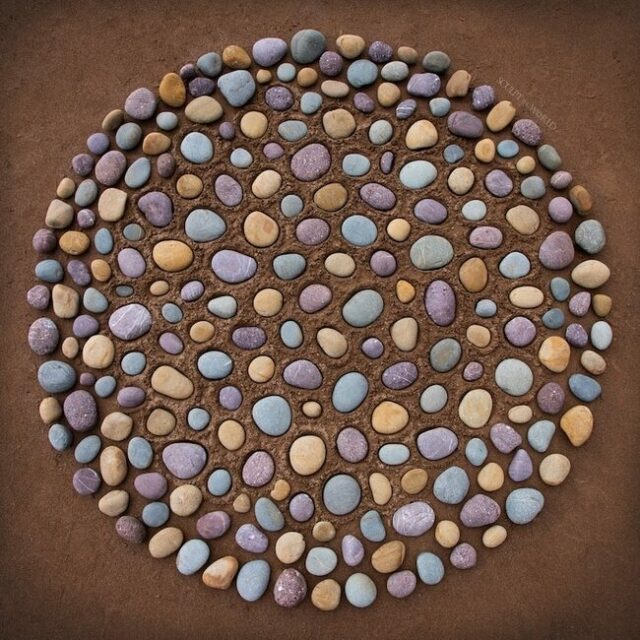
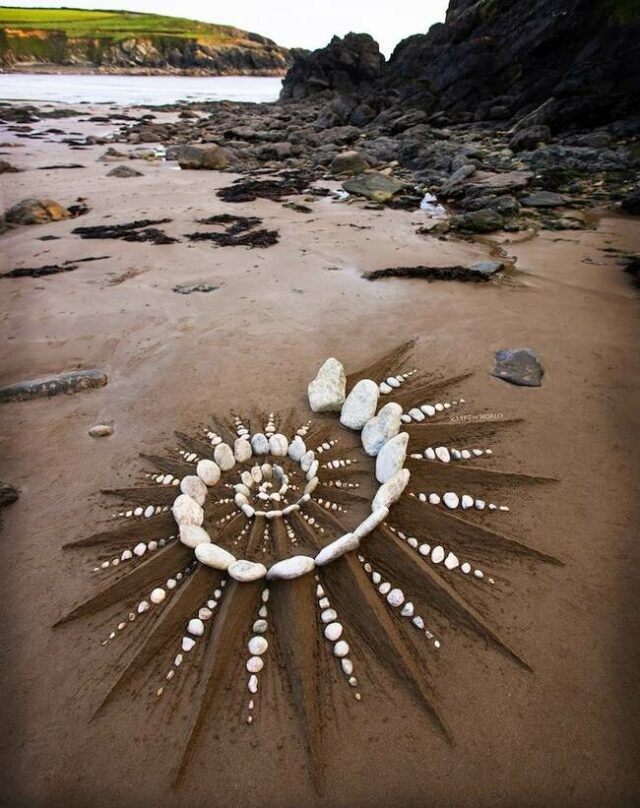
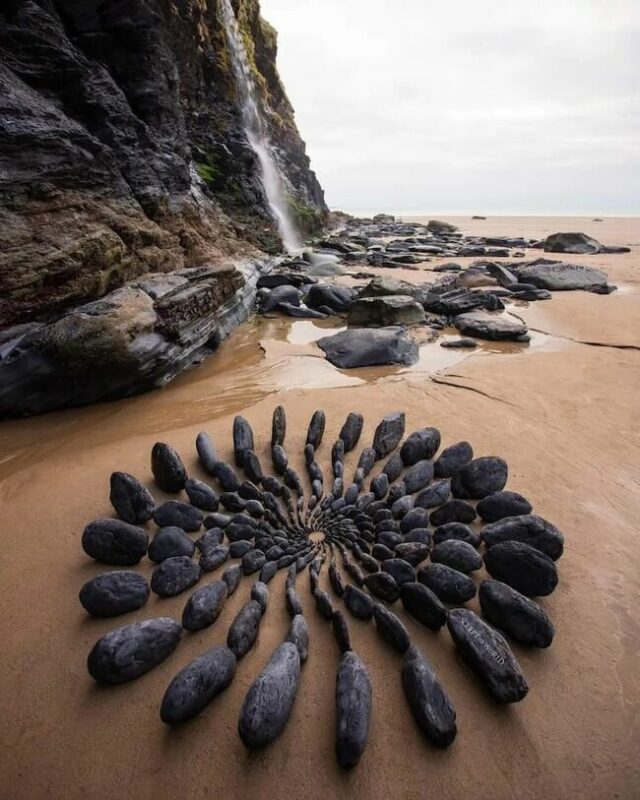


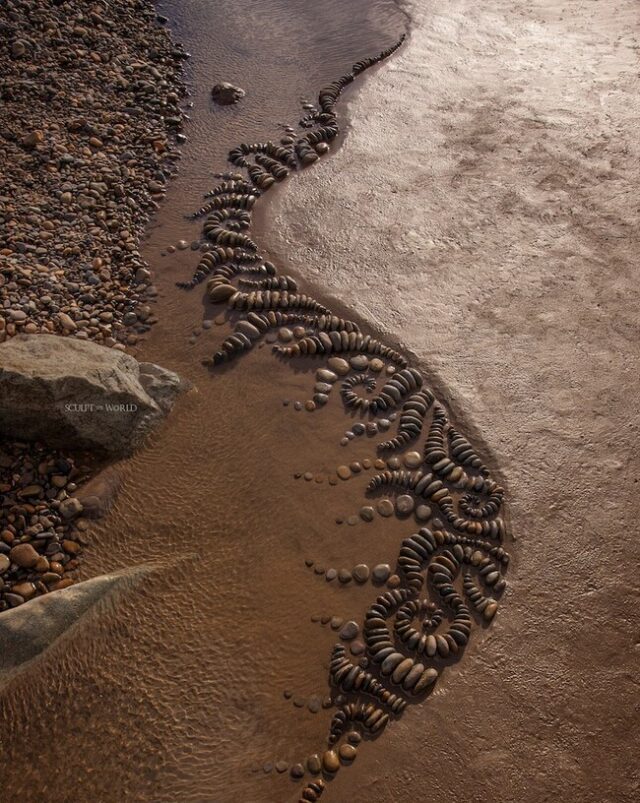
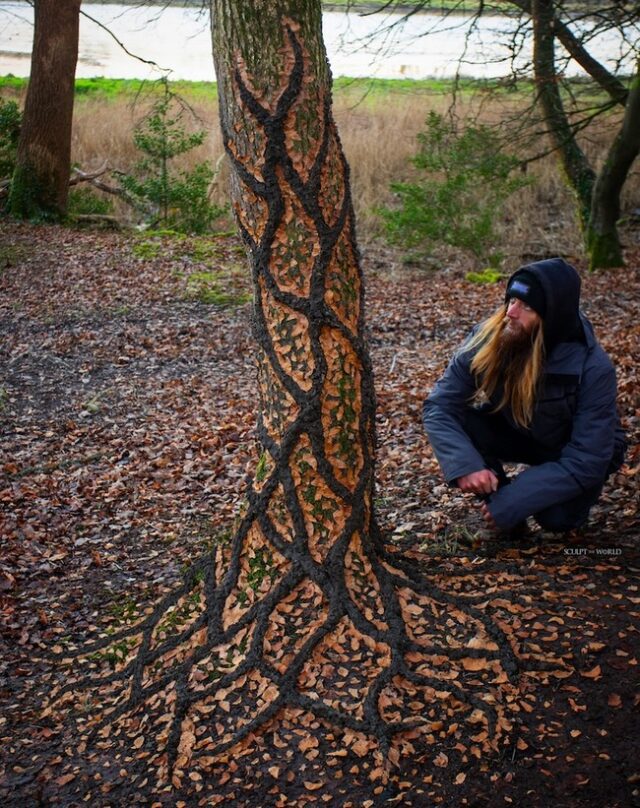
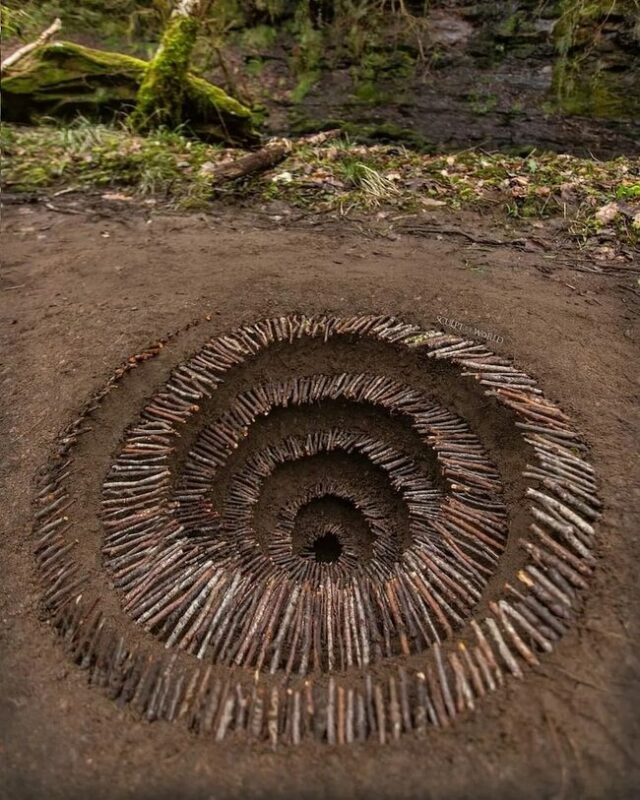
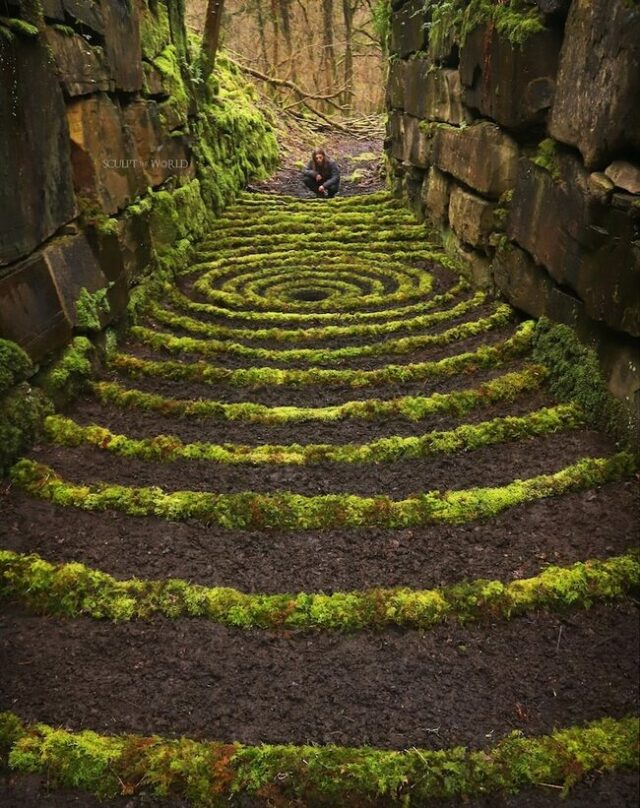
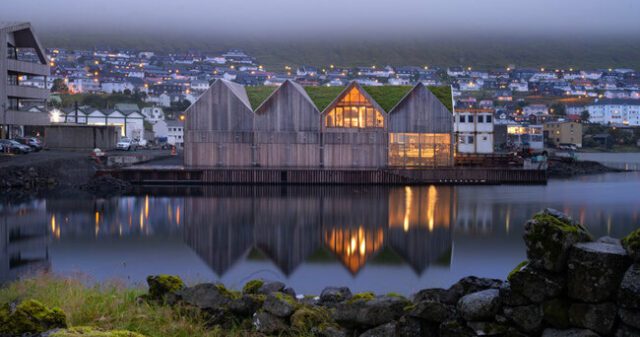
Nestled amidst the picturesque fjords of the Faroe Islands, Henning Larsen’s Klaksvík Row Club emerges as a beacon of both architectural ingenuity and cultural reverence. Serving as the centerpiece of Larsen’s urban vision for Klaksvík, this landmark transcends its utilitarian function, embodying a profound celebration of Faroese sporting heritage. With its distinctive sloping green roof and timber facade harmonizing with the surrounding landscape, the Row Club stands as a testament to Larsen’s commitment to integrating architecture with its natural context. Designed to foster community engagement and interaction, the Row Club is not merely a space for athletes but a vibrant cultural hub, offering breathtaking views of the fjords and serving as a venue for events and exhibitions that honor the age-old tradition of Faroese boat building.
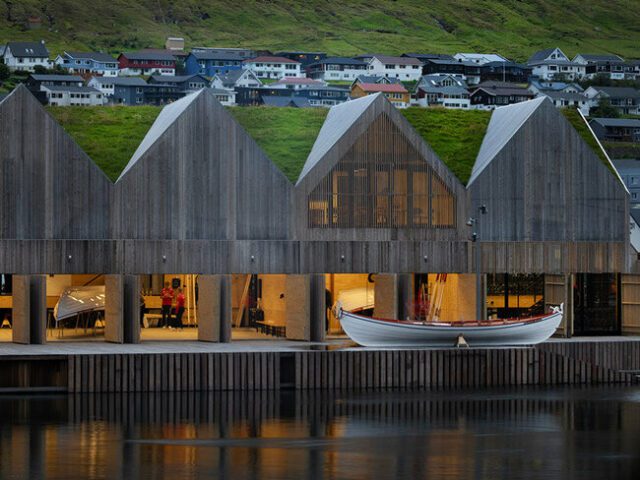
Ósbjørn Jacobsen, Design Director for Henning Larsen in the Faroe Islands, encapsulates the essence of the Row Club’s design ethos, emphasizing its rootedness in Klaksvík’s landscape and cultural tapestry. This architectural marvel seamlessly blends form and function, prioritizing user experience while paying homage to the timeless craft of rowing. From its thoughtfully designed interior spaces, flooded with natural light and offering panoramic vistas, to its versatile outdoor area transformed into a bustling city corner during warmer months, the Row Club exemplifies Larsen’s commitment to creating dynamic, adaptable spaces that evolve alongside their communities. As Larsen’s masterplan for Klaksvík unfolds, marked by pedestrian-centric design principles and expansive public spaces, the Row Club stands as a symbol of Klaksvík’s promising future—a testament to the enduring legacy of Faroese culture and Larsen’s visionary architectural prowess.
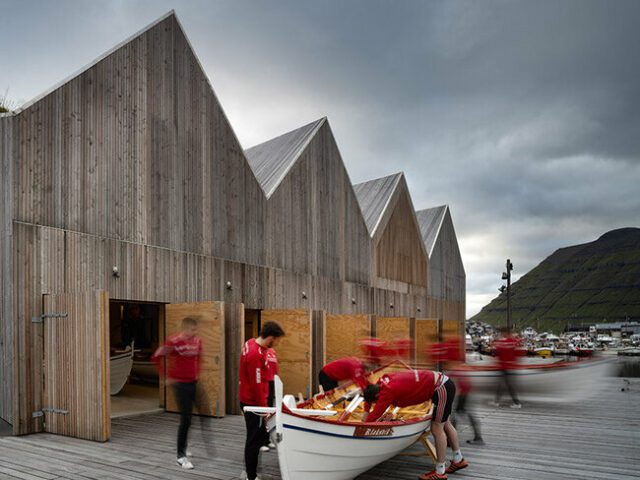
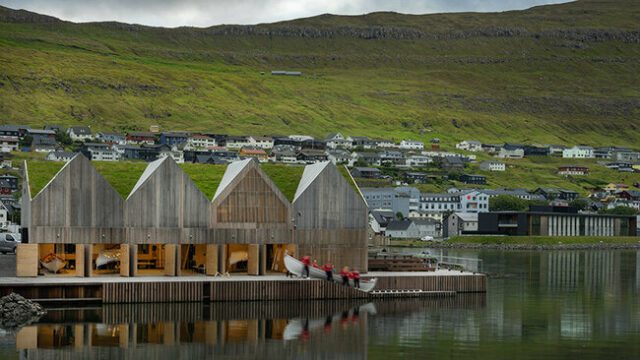
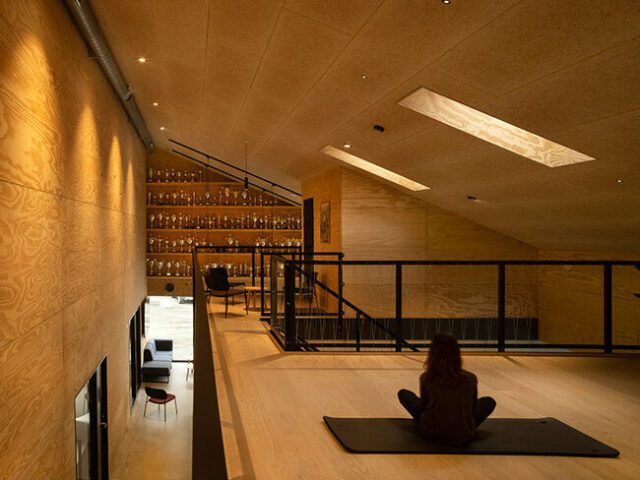

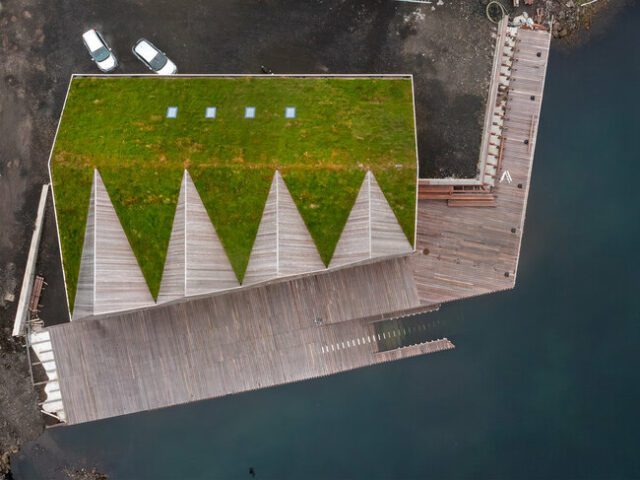

The Royal Horticultural Society (RHS) has highlighted the emergence of rain gardens and bathwater reuse as crucial trends in gardening, particularly in response to anticipated water scarcity stemming from climate change. At prestigious events like the Chelsea Flower Show, where innovation meets aesthetics, gardens dedicated to water conservation take center stage. Notably, the Water Aid garden showcases a pavilion designed for rainwater harvesting, demonstrating the importance of slowing runoff to collect and filter water for both irrigation and consumption. Similarly, the National Autistic Society garden ingeniously channels rainwater away from the main terrace, utilizing natural features like mossy dells to manage excess water during heavy rainfall while nurturing a diverse range of plant species adapted to wet conditions.

Rain gardens, as defined by the RHS, serve as vital tools in mitigating water shortages. These shallow depressions, strategically planted with water-tolerant and drought-resistant flora, efficiently capture and retain rainwater runoff, minimizing the need for supplemental watering. Offering benefits beyond conservation, rain gardens reduce erosion, provide habitat for wildlife, and enhance the overall health of garden ecosystems. Furthermore, as the RHS explores the feasibility of incorporating grey water, such as from bathing and washing up, into gardening practices, the conversation shifts towards sustainable solutions that align with evolving environmental imperatives. Dr. Nicholas Cryer, a senior water scientist at the RHS, underscores the necessity of adopting innovative approaches, emphasizing the potential of greywater recycling as a practical step towards addressing the impending water deficit and fostering conscientious stewardship of precious resources.

Minimaliste’s latest addition to their Noyer line, the 2024 Noyer XL, represents a leap forward in the realm of luxurious micro-living. Designed to withstand diverse weather conditions, including extreme temperatures, this tiny home offers a blend of functionality and comfort. With its extended length of 38.5 feet and width of 10.5 feet, the Noyer XL surpasses its predecessors, offering a more spacious interior while requiring a permit for road towing. Clad in a sleek combination of horizontal cedar and vertical steel, the exterior exudes modernity and durability, resting on a sturdy triple-axle trailer. Upon entering, residents are greeted by a thoughtfully laid out living space, seamlessly integrating a cozy kitchen, complete with ample storage, a fridge/freezer, oven, and propane-powered stove, alongside a comfortable seating area and entertainment center.
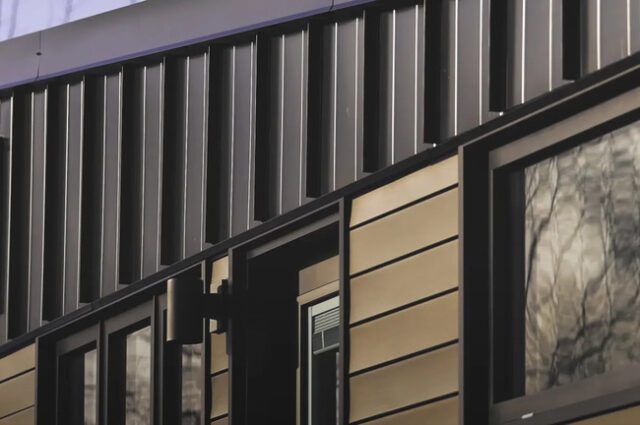
The innovative design of the Noyer XL prioritizes storage, featuring underfloor compartments and functional shelving throughout the home. A separate hallway houses a washing machine and dryer, enhancing convenience for residents. The bathroom, albeit compact, offers all the essentials, including a flushing toilet, shower, and vanity sink unit. Sleeping arrangements cater to both downstairs and upstairs preferences, with the former boasting generous headroom and a spacious wardrobe, while the latter, accessible via a storage-integrated staircase, offers a loft-style retreat. Minimaliste’s meticulous attention to detail and commitment to maximizing space ensure that the Noyer XL provides a luxurious micro-living experience without compromising on comfort or functionality.
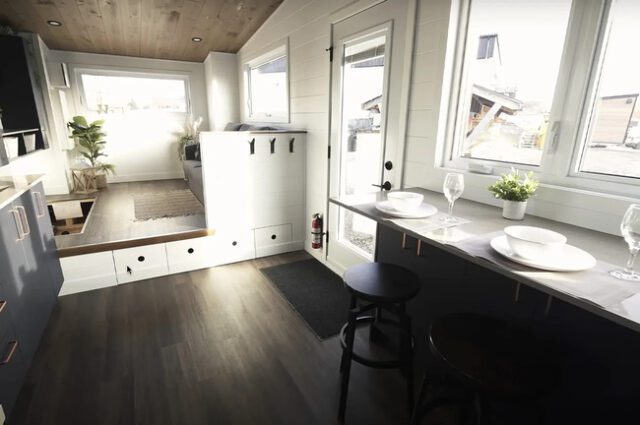
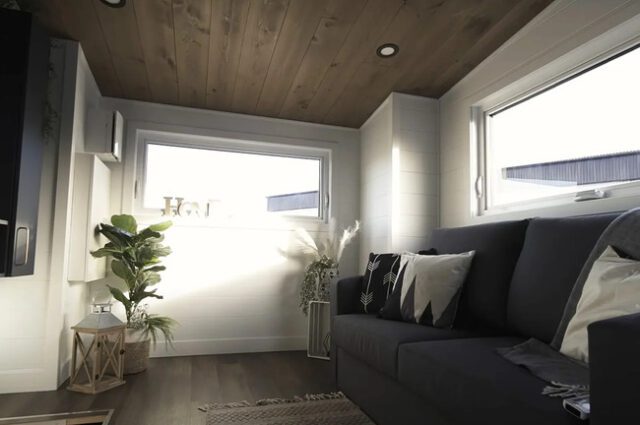

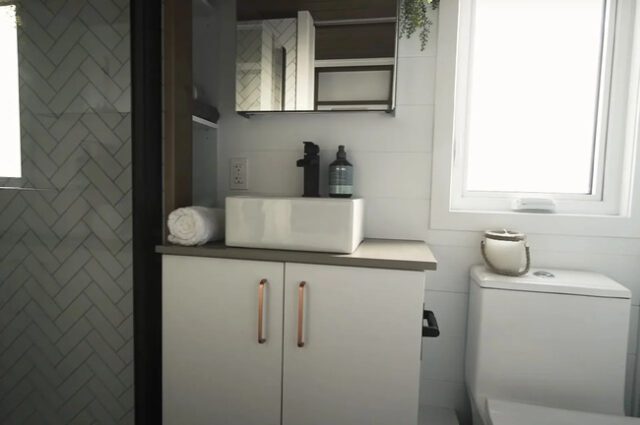
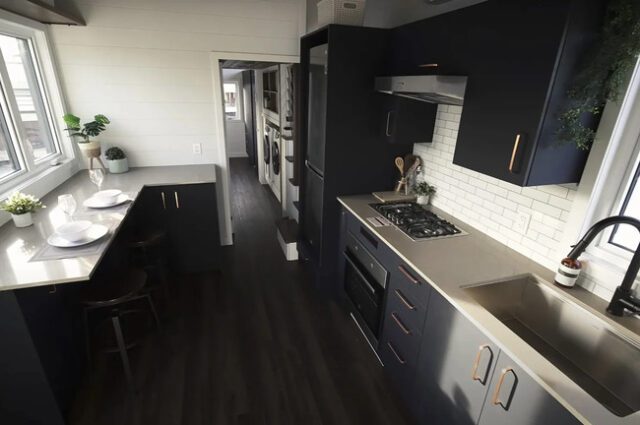
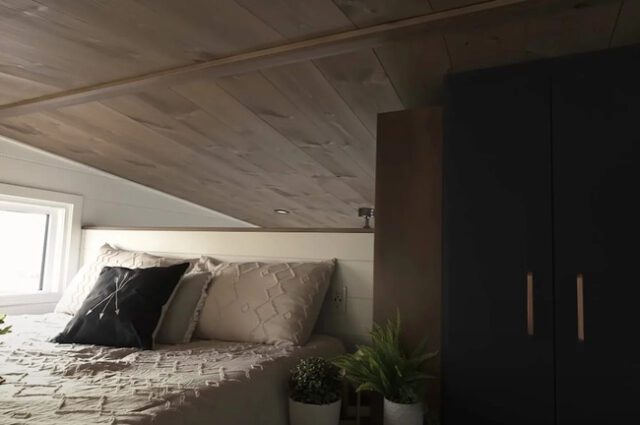
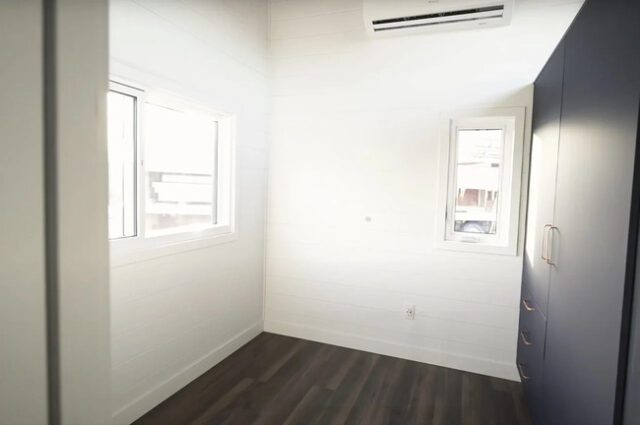
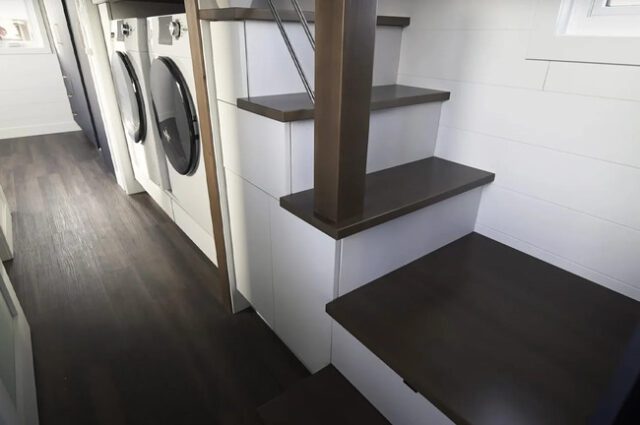

Bob Dunlop’s heartwarming tale of friendship with a young fox touches on the tender intersection of compassion and wildlife stewardship. Observing the fox’s ailment, Dunlop’s innate empathy prompted him to intervene, seeking not just to heal her physical wounds but to nurture a bond that transcends species barriers. His dedication to her well-being, diligently administering treatments and providing sustenance, exemplifies the profound connection humans can forge with the natural world.

As their friendship deepened, Dunlop remained mindful of maintaining the fox’s wild instincts, recognizing the importance of allowing her to reclaim her place in the wilderness. Despite the inevitable bittersweetness of letting go, he acknowledges the necessity of her rewilding, a testament to his reverence for her innate wildness. Yet, amidst this transition, the echoes of their bond linger—a testament to the enduring impact of kindness and the hope that one day, the fox may find herself nurturing her cubs, perpetuating the cycle of resilience and compassion in the wild.
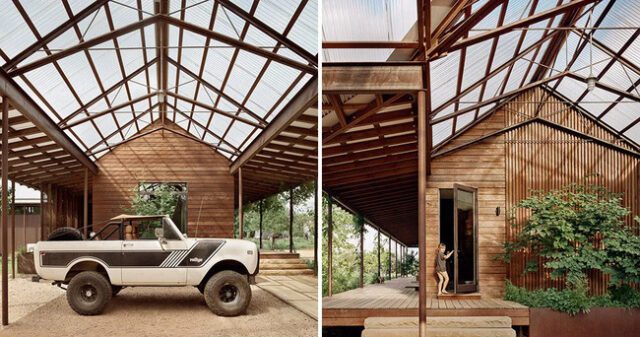
Roam Ranch, a testament to Baldridge Architects’ innovative prowess, emerges as a harmonious blend of modern design and rustic charm amidst the sprawling landscapes of rural Texas. Nestled on a working ranch just outside Fredericksburg, this 4,362-square-foot abode not only reflects the contemporary aesthetic but also pays homage to its surroundings. Collaborating once again with Baldridge Architects, the visionary clients sought refuge from urban rigors, envisioning a sanctuary that seamlessly integrates with their sustainable agricultural pursuits on the ‘Force of Nature’ ranch. Beyond mere living quarters, the dwelling needed to accommodate their entrepreneurial endeavors, including podcasting and educational events. Guided by this dynamic vision, Baldridge Architects embarked on a journey to craft a space that not only honored Roam Ranch’s heritage but also facilitated modern functionality.

Intricately weaving together the old and the new, the architects orchestrated a symphony of design elements that resonate with both tradition and innovation. The resulting architectural marvel pays homage to the timeless Central Texas ‘dog-trot‘ house while embodying contemporary sophistication. With meticulous attention to detail, the team navigated logistical challenges, ensuring uninterrupted occupancy during construction, even with the arrival of a newborn. From the unified roofline to the raw stone hearth seamlessly integrated into the floor, every aspect of Roam Ranch reflects a thoughtful synthesis of form and function. As daylight filters through the corrugated polycarbonate panels, illuminating the space within, the dwelling stands as a testament to Baldridge Architects’ unwavering commitment to creating spaces that are not only visually stunning but also deeply rooted in their context and purpose.
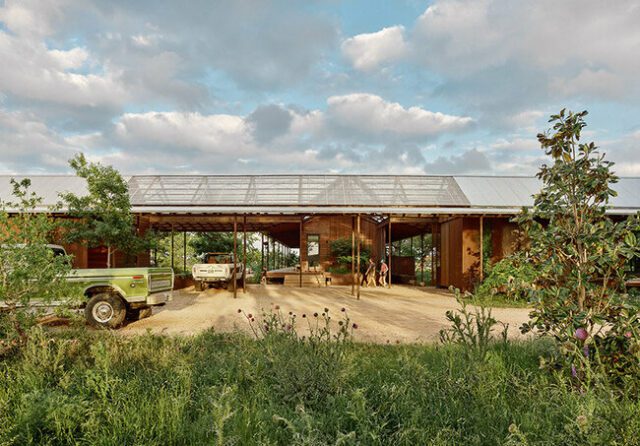
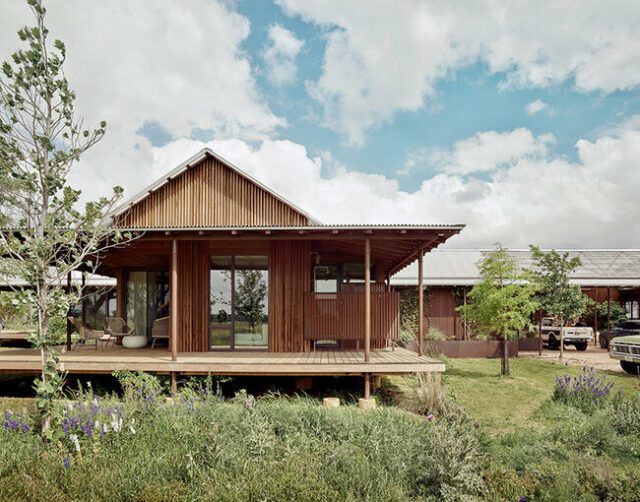
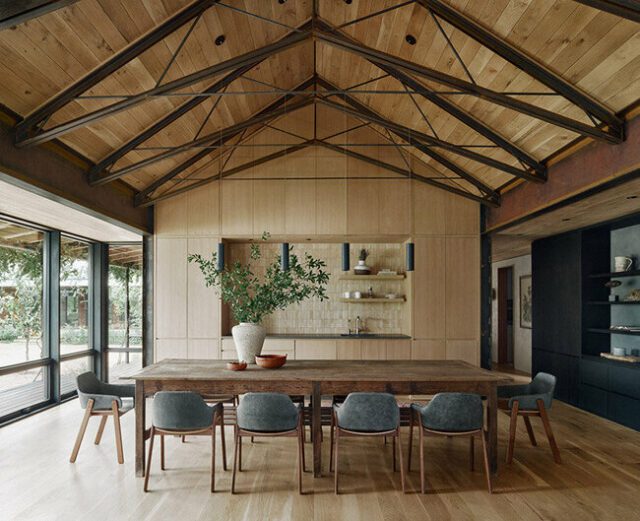
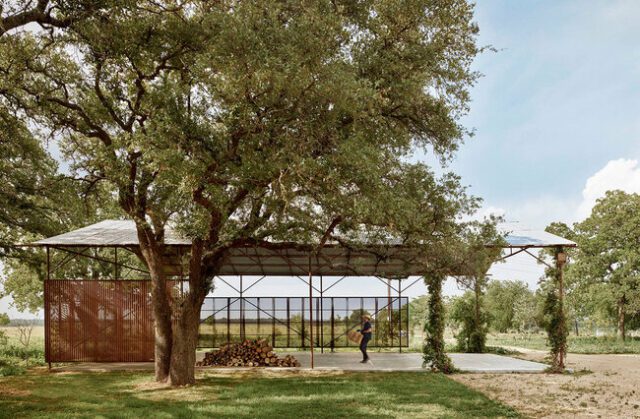
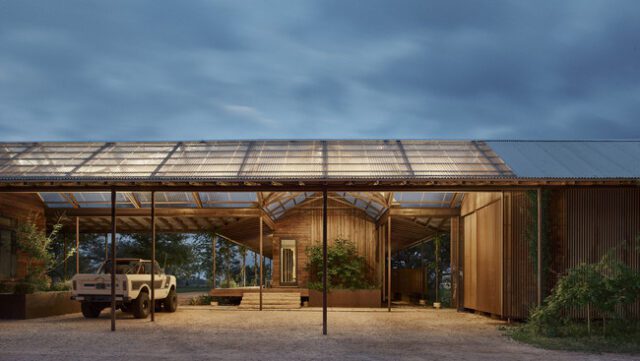

Perched majestically atop the cliffs of Bali, the Private Jet Villa stands as a testament to architectural ingenuity and repurposing creativity. Once a Boeing 737 aircraft soaring the Indonesian skies, this luxurious abode now offers a unique living experience suspended 150 meters above sea level. Crafted by the skilled hands of Geometrium Studio, the villa seamlessly marries the sleek lines of aviation with the tranquility of its natural surroundings. From the moment one steps through the fuselage door, they are greeted by an interior that exudes elegance and comfort. Every corner of the villa tells a story of meticulous design and thoughtful utilization of space, from the bedroom nestled within the cockpit, complete with a jacuzzi, to the terraces extending from the wings, offering breathtaking views of the Balinese landscape. Continue reading “A Boeing 737 Was Transformed Into This Luxurious Villa Perched On a Cliffside in Bali” »

































































